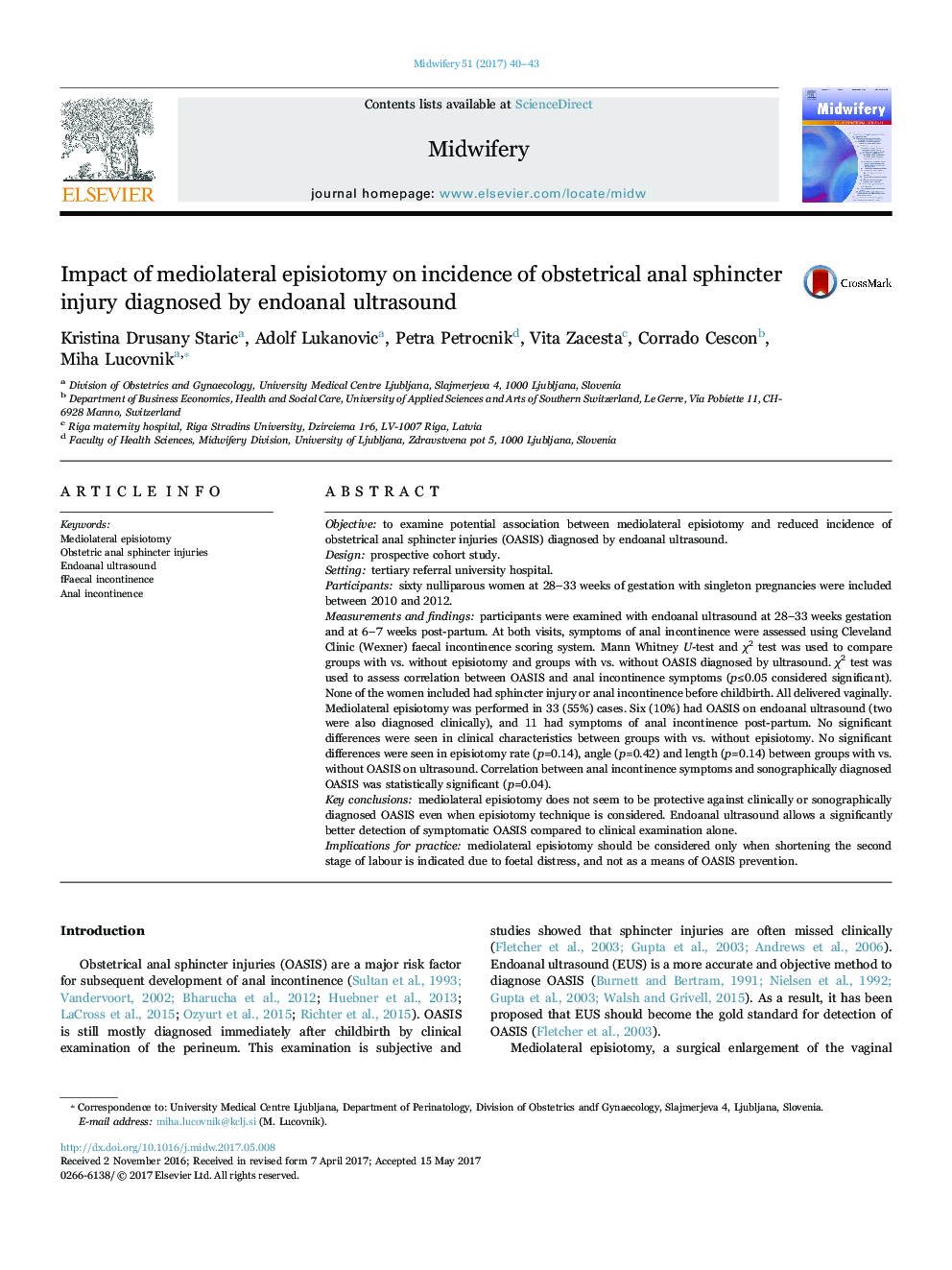| کد مقاله | کد نشریه | سال انتشار | مقاله انگلیسی | نسخه تمام متن |
|---|---|---|---|---|
| 5122171 | 1487133 | 2017 | 4 صفحه PDF | دانلود رایگان |
- Endoanal ultrasound allows better detection of OASIS than clinical examination.
- Sonographically diagnosed OASIS is associated with symptoms of anal incontinence.
- Mediolateral episiotomy does not prevent sonographically diagnosed OASIS.
- Episiotomy does not seem to be protective regardless of its angle and length.
Objectiveto examine potential association between mediolateral episiotomy and reduced incidence of obstetrical anal sphincter injuries (OASIS) diagnosed by endoanal ultrasound.Designprospective cohort study.Settingtertiary referral university hospital.Participantssixty nulliparous women at 28-33 weeks of gestation with singleton pregnancies were included between 2010 and 2012.Measurements and findingsparticipants were examined with endoanal ultrasound at 28-33 weeks gestation and at 6-7 weeks post-partum. At both visits, symptoms of anal incontinence were assessed using Cleveland Clinic (Wexner) faecal incontinence scoring system. Mann Whitney U-test and Ï2 test was used to compare groups with vs. without episiotomy and groups with vs. without OASIS diagnosed by ultrasound. Ï2 test was used to assess correlation between OASIS and anal incontinence symptoms (pâ¤0.05 considered significant). None of the women included had sphincter injury or anal incontinence before childbirth. All delivered vaginally. Mediolateral episiotomy was performed in 33 (55%) cases. Six (10%) had OASIS on endoanal ultrasound (two were also diagnosed clinically), and 11 had symptoms of anal incontinence post-partum. No significant differences were seen in clinical characteristics between groups with vs. without episiotomy. No significant differences were seen in episiotomy rate (p=0.14), angle (p=0.42) and length (p=0.14) between groups with vs. without OASIS on ultrasound. Correlation between anal incontinence symptoms and sonographically diagnosed OASIS was statistically significant (p=0.04).Key conclusionsmediolateral episiotomy does not seem to be protective against clinically or sonographically diagnosed OASIS even when episiotomy technique is considered. Endoanal ultrasound allows a significantly better detection of symptomatic OASIS compared to clinical examination alone.Implications for practicemediolateral episiotomy should be considered only when shortening the second stage of labour is indicated due to foetal distress, and not as a means of OASIS prevention.
Journal: Midwifery - Volume 51, August 2017, Pages 40-43
